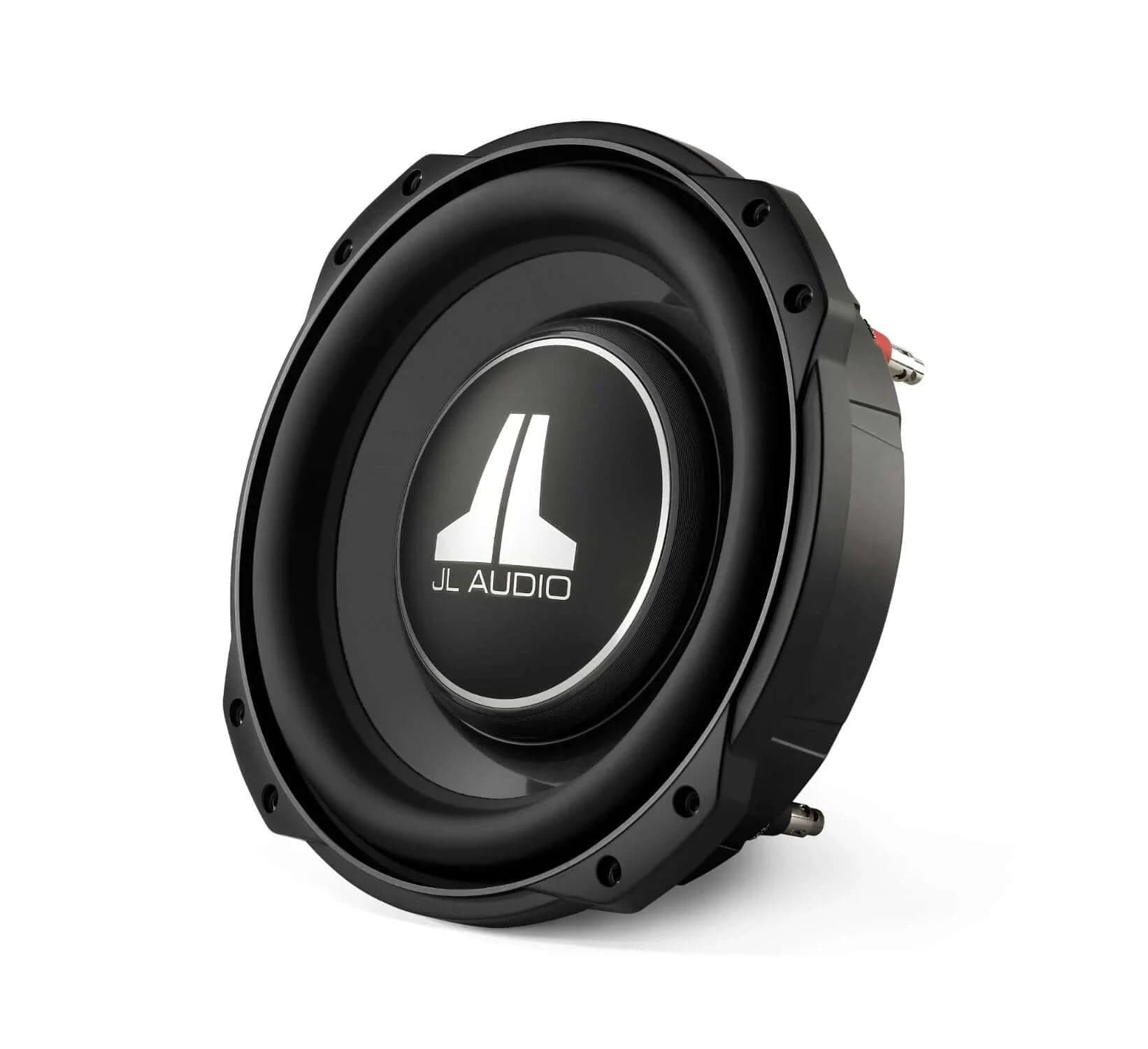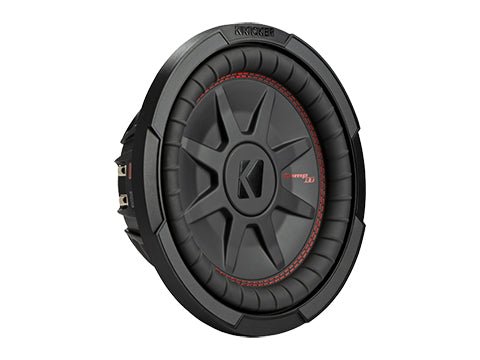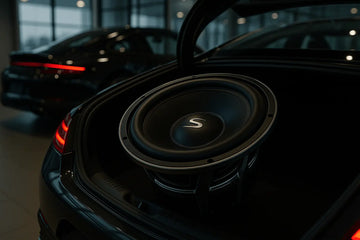Tuning Amp for Subs: Complete Guide to Perfect Bass 2025
Master the art of amplifier tuning for subwoofers with expert techniques and AudioIntensity's premium products
If you're a music enthusiast, you know the power of bass. It adds depth, richness, and impact to your audio system, making your music-listening experience more immersive and enjoyable. And when it comes to bass, subwoofers are the key players. But to truly unlock the full potential of your subwoofers, you need to tune your amp correctly. This comprehensive guide will walk you through tuning amp for subs, providing expert tips for success with premium amplifiers and professional techniques.
AudioIntensity's Premium Subwoofer & Amplifier Solutions
Discover our carefully curated selection of high-performance subwoofers and amplifiers designed for optimal tuning compatibility and superior bass response.

Wavtech ThinPRO12
Power: 750W RMS
Type: Shallow Mount
Depth: 3-inch mounting
Revolutionary thin-line design perfect for tuning with high-power amplifiers. Exceptional bass response in minimal space.

JL Audio 10TW3-D4
Power: 400W RMS
Impedance: Dual 4-ohm
Type: Thin-line
Premium thin-line subwoofer with exceptional tuning precision. Ideal for amplifier matching and system optimization.

Alpine RSW10D4
Power: 600W RMS
Technology: DD-Linear Circuit
Magnet: Neodymium
Advanced magnetic circuit technology ensures precise amplifier tuning compatibility and superior bass control.

Kicker CompRT 10
Power: 400W RMS
Price: $199.99
Cooling: Forced-Air System
Budget-friendly option with professional tuning capabilities. Forced-air cooling for reliable high-power operation.
Understanding the Basics of Subwoofer Tuning
When it comes to subwoofer tuning, it's essential to understand the role of the amplifier in sound enhancement. As the name suggests, an amplifier amplifies the power of audio signals, allowing speakers to produce higher volume levels without distortion. Amplifiers also improve audio systems' sound quality by boosting low audio signals, especially for subwoofers. Car Subwoofers, on the other hand, are a vital component of any sound system.
They excel at reproducing low-frequency audio content, adding depth and bass notes to your music. Subwoofers contribute to the immersive quality of your audio system, making you feel the music rather than hear it. With their ability to handle low notes, subwoofers significantly enhance the bass performance of your audio system. Browse our complete selection of car subwoofer guides for detailed installation and tuning information.
The Role of an Amplifier in Sound Enhancement
Amplifiers play a crucial role in enhancing sound quality by increasing the power of audio signals for speakers. They magnify the audio signal to drive speakers and boost low audio signals, especially for subwoofers. This amplification produces more transparent and impactful sound, improving the audio experience. By understanding how much power an amplifier should have, audio enthusiasts can make more informed decisions when selecting necessary items such as car amplifiers, head units, and rear speakers to achieve the best sound in their environment.
Highlight on Subwoofers: A Vital Component of Sound System
Enriching the audio system with deep, immersive bass sounds, subwoofers excel at reproducing low-frequency audio content. Specifically designed to handle low notes and bass sounds, they significantly enhance the overall bass performance of the audio system. By contributing to the immersive quality of the sound system, subwoofers play a vital role in creating a more informed shopping decision for audio enthusiasts. Explore our extensive collection of car speakers to complement your subwoofer setup.
Steps to Tune Your Amp for Subs
Now that we understand the basics of subwoofer tuning let's dive into the steps involved in tuning your amp for subs. By following these steps, you'll be able to achieve the perfect balance of bass and clarity in your audio system with products from our premium amplifier collection.
Step 1: Speaker Output Level
Ensuring the right speaker output level is crucial. Adjusting the speaker level control prevents distorted sound output and ensures balanced sound distribution across your system.
Step 2: Bass Optimization
Bass frequencies enrich the sonic characteristics of your music. Proper bass volume adds depth, power, and impact to create a more immersive sound environment.
Step 3: Frequency Harmony
Harmonizing all sound frequencies creates a balanced audio experience, ensuring optimal performance of your entire audio system.
Ensuring the Right Level of Speaker Output
Setting the speaker levels is crucial in preventing distorted sound output and ensuring balanced sound distribution. Proper adjustment not only impacts the overall sound quality of the audio system but also optimizes its performance. By setting the speaker levels correctly, you can maximize the entire system's sound output, enhancing the audience's listening experience in their environment.
This fine-tuning process allows you to tailor the audio to your environment and preferences, making it a critical step in achieving the best sound quality from your car speakers and sub amp. Consider pairing your setup with our marine audio equipment for versatile installation options.
Bass in Your Audio System
Enriching the sonic characteristics of your audio system, bass frequencies contribute to the full range of sound waves. The proper bass volume enhances the music listening experience and plays a significant role in amplifying higher frequencies. The bass boost setting also amplifies lower frequencies, creating a well-rounded audio experience.
By understanding the importance of bass in your audio system, you can make more informed decisions about settings such as the sub's volume, amplifier gain, and receiver's bass tone, ensuring the best sound quality for your environment. Learn more about bass optimization in our subwoofer enclosure guides.
Harmonizing All Sound Frequencies
Creating a balanced audio experience involves harmonizing sound frequencies, ensuring the sonic coloring of the music, and optimizing the performance of full-range speakers through frequency balance. This harmonization delivers an optimal listening environment and results in more informed listening decisions. You can achieve a well-informed listening experience by equalizing sound frequencies without overpowering or underwhelming any specific frequency. In equal power mode, you'll hear these differences in loudness as they naturally occur between speakers.
Common Amp and Sub Issues
While subwoofer tuning can be a rewarding process, it's not without its challenges. Let's look at some standard amp and sub-issues you may encounter and how to troubleshoot them using quality components from our amplifier selection.
Identifying and Resolving Distortions
One of the most common issues is distortion. Distortion occurs when the subwoofer is overloaded, resulting in a distorted sound output. To address distortion, it's essential to identify the source of the distortion and make the necessary adjustments.
Preventing subwoofer overloading is crucial in maintaining audio system clarity. Distortion issues can be resolved effectively to maintain peak power and enhance sound quality. Correcting amp distortion ensures the sub's volume is controlled correctly, resulting in an optimized listening experience.
Low-Pass Filter Issues
Another common issue is related to the low-pass filter. The low-pass filter blocks high-frequency signals from reaching the car subwoofer, allowing it to focus on the low frequencies.
Preventing subsonic filter anomalies is crucial with the correct low-pass filter setting. Optimizing the audio system's lowest frequency involves adjusting the low-pass filter settings. Maintaining proper low-pass filter settings is essential to balance the sub's volume.
The Art of Sound Tuning
Tuning your amp for subs is more than just adjusting a few settings. It's an art that requires precision, attention to detail, and a good ear. This section will explore the various aspects of sound tuning and how they contribute to the overall audio experience with premium components from AudioIntensity's amplifier collection.
Critical Tuning Parameters
Careful adjustment of the low-pass filter and subwoofer gain is essential for achieving a well-balanced bass. Setting these parameters correctly can enhance the bass frequencies without distortion, allowing precise control over the sound. Proper calibration ensures the seamless integration of the subwoofer with the entire audio system, leading to a more immersive audio experience. Balancing the low-pass filter and subwoofer gain is critical to achieving optimal bass performance, making it an essential step in fine-tuning your audio setup.
Bass Boost and Subsonic Filter
Properly adjusting the bass boost and subsonic filter is crucial for achieving a balanced and impactful bass output. This balance is essential to prevent distortion while enhancing the overall bass impact. Tailoring the subwoofer's performance to your preferences is critical, ensuring an optimal bass response that complements your listening experience.
Finding the proper equilibrium between the bass boost and the subsonic filter, including the bass drum, is the key to creating an enjoyable and immersive sound environment. Applying a little bass boost, as mentioned in the usage example, will significantly increase the kick, enhancing the bass impact without compromising the overall balance. For advanced techniques, check our installation guides.
Optimal Volume Levels
Achieving optimal volume levels, including remote bass boost, is critical regarding sound tuning. This section will discuss matching the subwoofer and the source unit volume levels and adjusting sound levels for different music genres using components from our premium subwoofer collection.
Volume Level Matching
Achieving seamless bass integration and a harmonious soundstage requires matching your subwoofer's and receiver's volume levels. This alignment prevents audio inconsistencies and ensures a balanced listening experience. Balancing the subwoofer and receiver volume levels facilitates a smooth transition between different frequency ranges, allowing for accurate bass reproduction without overpowering the rest of the audio system. Consistent volume levels promote a cohesive audio experience, enhancing the overall quality of sound.
Adjusting Sound Levels for Different Music Genres
Enhancing the audio experience for diverse music selections involves adapting sound levels to different music genres. This allows for optimal audio representation across various styles and ensures that each genre is reproduced with the appropriate sonic characteristics. Tailoring sound levels to different music genres provides an immersive listening environment for varied musical preferences, enabling a more engaging and authentic listening experience.
Customizing sound levels based on music genres enables a seamless transition between different styles, making it a great way to appreciate the nuances of each genre without compromising on the quality of the audio. Consider upgrading your entire system with our motorcycle audio solutions for versatile applications.
Expert Tips for Tuning Success
To wrap up our discussion on tuning amp for subs, let's explore some expert tips for tuning success. Following these tips can avoid common tuning mistakes and achieve the best sound quality from your car's audio system using AudioIntensity's premium amplifiers.
Essential Tuning Steps
- Proper gain adjustment
- Setting the Low Pass Filter (LPF)
- Setting the subsonic filter
- Setting phase alignment
Common Tuning Mistakes to Avoid
Averting the most prevalent tuning errors is vital for preventing subpar audio performance. Acknowledging these common mistakes promotes more effective and efficient sound tuning, improving the audio experience. By removing these errors, you can achieve the best sound quality from your car audio system.
Importance of Quality Equipment
When aiming for top-notch audio tuning results, prioritizing quality equipment is necessary. The foundation of exceptional sound quality and tuning precision lies in selecting high-grade gear. Investing in quality equipment will pave the way for a more rewarding audio tuning experience and ensure better system performance and overall listening satisfaction.
Getting the Best from Your System
Maximizing the potential of your car audio system involves a comprehensive understanding of sound tuning principles and a holistic approach to proper optimization. Meticulous attention to audio tuning details is essential for unleashing the full potential of your car audio system and promising an enhanced audio listening experience. By optimizing your car audio system with premium amplifiers, you can enjoy the highest quality audio output in your vehicle.
System Optimization Checklist
To extract the best from your car audio system, it's crucial to understand the intricacies of sound tuning and make informed decisions about necessary items such as head units, RCA cables, car amplifiers, rear speakers, and the acoustics of your car. Consider complementing your setup with our amplifier guidance resources.
How Do You Know When Your Amp and Subs Are Perfectly Tuned?
Adjust the amp gain before the distortion level to ensure your amp and subs are perfectly tuned. Fine-tune the bass boost, subsonic filter, and sub's volume. The result? No distortion, clean sound, maximum volume, and bass sounds at the correct frequencies.
An accurate amp gain setting and sub's volume are crucial to avoid speaker damage. Now, turn the amp's gain up until you hear the distortion level again; then back off the gain slightly until the distortion disappears. The amp gain is now set to lower the receiver volume to a more comfortable level. Even if your speaker system does not have an amplifier, you still need to find that maximum volume point on your receiver by turning it up to just below the distortion level.
Frequently Asked Questions
How do I make my subs hit harder?
Adjust the gain on your amp for more power to make your subs hit harder. Ensure your subs are the right size and have sufficient air space. Experiment with different subwoofer box designs to find what works best. Consider upgrading your electrical system to handle increased power demands.
What should I set my LPF to on my amp?
To optimize the sound quality of your subwoofers, you need to set the LPF (low pass filter) on your amp. The ideal setting depends on your subwoofer's frequency response range, but a typical range is between 70-100Hz. Experiment with different settings to find the perfect balance for your setup.
How do I know if my amp gain is too high?
If your subwoofers are distorting or making a "clipping" noise, your amp gain might be too high. Check the manual for recommended settings and use a multimeter to measure the output voltage. It's better to set the gain slightly lower to prevent equipment damage.
Conclusion
In conclusion, tuning your amp for subs is essential to achieve optimal sound quality and enhance your audio experience. Understanding the basics of subwoofer tuning and the role of an amplifier is crucial in this process. You can create a well-balanced audio system by following the steps to tune your amp for subs, such as adjusting speaker output levels, emphasizing bass, and harmonizing sound frequencies.
Troubleshooting standard amps and sub-issues and mastering the art of sound tuning are also crucial for success. Remember to avoid common tuning mistakes, invest in quality equipment from AudioIntensity's premium collection, and strive for perfection to get the best from your car audio system.
Related Resources & Collections
Car Subwoofers
Premium subwoofers for perfect bass response and amplifier compatibility
Explore Collection →





